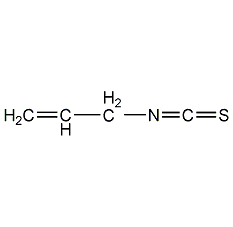
Structural formula
| Business number | 02CH |
|---|---|
| Molecular formula | C5H10O3 |
| Molecular weight | 118.13 |
| label |
2-Hydroxyethylpropionate, a-hydroxypropionate ethyl ester, Ethyl a-hydroxypropionate, Ethyl L-lactate, 2-Hydroxypropanoic acid ethyl ester, Flavors and fragrances |
Numbering system
CAS number:97-64-3
MDL number:MFCD00004518
EINECS number:202-598-0
RTECS number:OD5075000
BRN number:1209448
PubChem number:24901084
Physical property data
1. Properties: colorless transparent liquid with slight odor. [1]
2. Melting point (℃): -26[2]
3. Boiling point (℃): 154[3]
4. Relative density (water = 1): 1.03[4]
5. Relative vapor Density (air=1): 4.07[5]
6. Saturated vapor pressure (kPa): 0.5 (25℃)[6]
7. Heat of combustion (kJ/mol): -3190.1[7]
8. Critical pressure (MPa): 3.86[8]
9. Octanol/water partition coefficient: -0.18[9]
10. Flash point (℃): 46.1 (CC )[10]
11. Ignition temperature (℃): 400[11]
12. Explosion upper limit ( %): 10.6[12]
13. Lower explosion limit (%): 1.5[13]
14. Dissolution Properties: Miscible with water, miscible in alcohols, esters, ketones, hydrocarbons, and oils. [14]
Toxicological data
1. Acute toxicity: rat oral LD50: >5mg/kg; rat peritoneal cavity LDL0: 1mg/kg; mouse oral LD50: 2500mg/kg; mouse subcutaneous LD50: 2500mg/kg; mouse Intravenous injection LD50: 600mg/kg; rabbit skin contact LD50: >5mg/kg; guinea pig muscle LDL0: 2605mg/kg;
2. Acute toxicity [15] LD50: 2500mg/kg (orally administered to mice)
3. Irritation No information available
Ecological data
1. Ecotoxicity No data available
2. Biodegradability No data available
3 .Non-biodegradability No information available
Molecular structure data
1. Molar refractive index: 28.48
2. Molar volume (cm3/mol): 112.4
3. Isotonic specific volume (90.2K ): 269.9
4. Surface tension (dyne/cm): 33.2
5. Polarizability (10-24cm3): 11.29
Compute chemical data
1. Reference value for hydrophobic parameter calculation (XlogP): 0.2
2. Number of hydrogen bond donors: 1
3. Number of hydrogen bond acceptors: 3
4. Number of rotatable chemical bonds: 3
5. Number of tautomers: none
6. Topological molecule polar surface area 46.5
7. Number of heavy atoms: 8
8. Surface charge: 0
9. Complexity: 79.7
10. Number of isotope atoms: 0
11.��Determine the number of atomic stereocenters: 0
12. Uncertain number of atomic stereocenters: 1
13. Determine the number of chemical bond stereocenters: 0
14. Number of uncertain chemical bond stereocenters: 0
15. Number of covalent bond units: 1
Properties and stability
1. Stability[16] Stable
2. Incompatible substances[17] Strong oxidants, acids, alkalis
3. Polymerization hazard[18] No polymerization
Storage method
Storage Precautions[19] Store in a cool, ventilated warehouse. The storage temperature should not exceed 37°C and should be kept away from fire and heat sources. Keep container tightly sealed. They should be stored separately from oxidants, acids, and alkalis, and avoid mixed storage. Use explosion-proof lighting and ventilation facilities. It is prohibited to use mechanical equipment and tools that are prone to sparks. The storage area should be equipped with emergency release equipment and suitable containment materials.
Synthesis method
1. Metal halide catalysis method. Using metal halide instead of concentrated sulfuric acid to catalyze the synthesis of ethyl lactate, the yield is 65%-71%.
2. Rare earth compound catalysis method. Add 0.22-0.33 mol of ethanol, 0.11 mol of lactic acid, 25 mL of water-carrying agent and rare earth compound (molar ratio to acid is 1:100) into the flask, reflux for 2.5-3 hours, and evaporate excess ethanol, water-carrying agent and rare earth compounds from the reaction solution. The unreacted lactic acid is then distilled under reduced pressure and the product is collected with a yield of 74%-79%.
3. Sulfuric acid catalysis method. Lactic acid is esterified with excess ethanol under the catalysis of sulfuric acid to obtain ethyl lactate; it can also be heated in carbon tetrachloride to effluent for 24 hours, distilled under normal pressure to recover excess ethanol, and then distilled under reduced pressure to obtain the finished product.
4. Solid acid catalysis method. The NaY molecular sieve is washed with water, dried, and burned at high temperature, and then stirred and impregnated with a certain concentration of NH4Cl solution to perform ion exchange. The NH4Y is filtered, washed, dried, and activated at 550°C to obtain the solid acid HY. Then add lactic acid, ethanol, benzene, and HY into the reaction bottle, HY/lactic acid (mass ratio) = 25/100, lactic acid/ethanol (molar ratio) = 1/3. After reflux and water separation reaction at 100-160°C for 8-10 hours, the esterification rate is over 60%.
5. Distillation esterification method. Add 225g of 80% lactic acid, 475Ml (380g) of 95% ethanol, 100mL of benzene, 2 mL of concentrated sulfuric acid and a little zeolite into the flask (1000 mL) of the water distillation device. Add the reaction solution until it boils. The steam (ethanol, benzene and water) passes through the distillation column and enters the condenser. The water layer is separated and then flows back to the distillation column. The temperature at the top of the column is stable at 64.9°C. When 240g of water layer is separated (which contains 119g of ethanol, 99g of water, and 22g of benzene), almost no water separates out. When the temperature at the top of the column rises to 68°C, the esterification is completed. After cooling the reaction solution, add 6 g of anhydrous sodium acetate to neutralize sulfuric acid, and perform distillation under reduced pressure. First, complete reflux for 1 hour, then under a vacuum of 2.45Kpa, control the reflux ratio to not less than 5, and the column top temperature to 58°C, to distill 226g of colorless and clear ethyl lactate, with a yield of 96%.
6. It is obtained by esterification of lactic acid and excess ethanol under the action of catalyst, and then refined.
Purpose
1. Mainly used for blending apple, pineapple, caramel, frankincense and other food flavors, and also used in wine flavors such as rum and liquor. Ethyl lactate is a food flavoring allowed in my country. Generally, it is 1000mg/kg in alcoholic beverages; 580-3100mg/kg in chewing gum; 71mg/kg in baked goods; 28mg/kg in candies; and 17mg/kg in cold drinks.
2. Used as a solvent for cellulose esters, resins, coatings, etc., and also used as perfume. [20]
extended-reading:https://www.newtopchem.com/archives/179extended-reading:https://www.bdmaee.net/wp-content/uploads/2022/07/2212.jpgextended-reading:https://www.bdmaee.net/toyocat-dmi-gel-catalyst-tosoh/extended-reading:https://www.bdmaee.net/dibutyl-tin-diacetate/extended-reading:https://www.bdmaee.net/jeffcat-zf-10-catalyst-cas83016-70-0-huntsman/extended-reading:https://www.newtopchem.com/archives/41226extended-reading:https://www.bdmaee.net/nt-cat-e-129-elastomer-catalyst-elastomer-catalyst-nt-cat-e-129/extended-reading:https://www.bdmaee.net/dabco-ne500-catalyst-cas10861-07-1-evonik-germany/extended-reading:https://www.newtopchem.com/archives/category/products/page/32extended-reading:https://www.bdmaee.net/potassium-isooctanoate/











